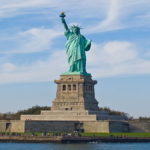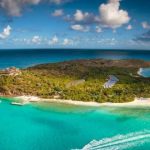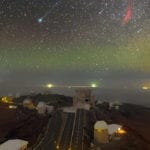 History
History  History
History  Animals
Animals Ten Times It Rained Animals (Yes, Animals)
 Mysteries
Mysteries 10 Devastating Missing Child Cases That Remain Unsolved
 Creepy
Creepy 10 Scary Tales from the Middle Ages That’ll Keep You up at Night
 Humans
Humans 10 One-of-a-kind People the World Said Goodbye to in July 2024
 Movies and TV
Movies and TV 10 Holiday Movies Released at Odd Times of the Year
 Politics
Politics 10 Countries Where Religion and Politics Are Inseparable
 Weird Stuff
Weird Stuff 10 Freaky Times When Famous Body Parts Were Stolen
 Miscellaneous
Miscellaneous 10 Interesting Things Manufacturers Stopped Making and Why
 Gaming
Gaming 10 Funny Tutorials in Games
 History
History 10 Desperate Last Stands That Ended in Victory
 Animals
Animals Ten Times It Rained Animals (Yes, Animals)
 Mysteries
Mysteries 10 Devastating Missing Child Cases That Remain Unsolved
Who's Behind Listverse?

Jamie Frater
Head Editor
Jamie founded Listverse due to an insatiable desire to share fascinating, obscure, and bizarre facts. He has been a guest speaker on numerous national radio and television stations and is a five time published author.
More About Us Creepy
Creepy 10 Scary Tales from the Middle Ages That’ll Keep You up at Night
 Humans
Humans 10 One-of-a-kind People the World Said Goodbye to in July 2024
 Movies and TV
Movies and TV 10 Holiday Movies Released at Odd Times of the Year
 Politics
Politics 10 Countries Where Religion and Politics Are Inseparable
 Weird Stuff
Weird Stuff 10 Freaky Times When Famous Body Parts Were Stolen
 Miscellaneous
Miscellaneous 10 Interesting Things Manufacturers Stopped Making and Why
 Gaming
Gaming 10 Funny Tutorials in Games
10 Exceptionally Rare Oddities Found on Islands
The world contains about 900,000 official islands—both continental and oceanic islands. Some countries only have a few, while others are formed of numerous. The Philippines has the most, with over 7,000 islands and islets. While most are commonplace, there are islands where things are not quite normal. From a rock that horrifies scientists to a broken species rebuilding itself, here are 10 islands with unique claims to fame.
Related: 10 Rare Finds From The Cretaceous Period
10 Biggest Number of Unique Mammals
Those who know a thing or two about animals might think that Australia or Madagascar is home to the largest concentration of unique mammal species. Not so. In 2016, a 15-year study on the matter wrapped up and revealed the actual location of this special menagerie. It was the island of Luzon, the biggest island in the Philippines.
Not counting flying mammals like bats, the study found that Luzon had 56 species of mammals, and a remarkable number of them, 52, were endemic to the island. Additionally, 93% of these species exist nowhere else, making the island a biological gem.
But how did the island manage to best all other places and develop so many unique mammals? Luzon is spacious, about the size of Iceland or Cuba. Apart from providing enough room, it also consists of various types of habitats, which reduce competition between evolving species.[1]
9 The First Laguna Moai
The Moai of Easter Island need no introduction. These massive human figures are among the most recognizable statues in the world. In 2023, the small island gave up another hidden Moai, but this one was different.
Sure, it was a regular Moai statue with the trademark elongated facial features and no legs. But what made this guy special was the location where it was found. Measuring 5 feet and 3 inches (1.6 meters) tall, it was discovered lying on its side in a dry laguna bed in a Rano Raraku crater. No other Moai had ever shown up in a laguna in this region.
The new statue also comes with a mystery. Experts estimate that the figure had been submerged for 200 or 300 years before the laguna began drying up in 2018. During that time, the water was almost 10 feet (3 meters) deep, meaning that no person could’ve purposefully positioned the statue there. It remains unclear how the Maoi ended up at the bottom of the laguna.[2]
3 A Hospital Superbug
In 2009, a fungus called Candida auris mysteriously appeared in several hospitals around the world. It was deadly to patients, multidrug-resistant, and extremely hard to evict from a hospital. By 2019, the Centers for Disease Control (CDC) called the fungus an “urgent threat” to the public.
C. auris had never been found in nature, but scientists suspected that the superbug came from the “wild” and that it was once harmless. Most fungi cannot hurt humans because our body temperature is too high. But what if climate change caused C. auris to evolve into an organism that can flourish in heat—and humans?
Researchers from the University of Delhi eventually found C. auris in a marsh and on a beach on the Andaman Islands, a remote archipelago near India. The beach bug was multidrug-resistant and grew faster at high temperatures than those from the marsh, suggesting it was a newer “version” that had adapted to heat. This supported the terrifying theory that global warming can turn harmless organisms into lethal pathogens for humans.[3]
7 “Dead” Ant Colonies
When devastating bushfires swept through Australia in 2020, Kangaroo Island did not escape unscathed. Two people lost their lives, and over 40% of the land was burned.
To help animal populations recover from the blaze, wildlife experts installed 901 breeding boxes across 13 diverse landscapes. Recently, scientists checked the nests and were surprised to find a Polyrhachis femorata ant colony inside one of the boxes. The shock factor didn’t come from the fact that the insects had moved into a box meant for bats and pygmy possums but because the entire ant colony was dead.
Well, they were pretending to be dead. One ant gave the game away by moving slightly. It’s not unknown for single ants from other species to fake death to fool predators. However, this is the first time a whole nest of ants keeled over in self-defense, probably triggered by the noise and movement when the scientists opened the box.[4]
6 An Infant-Sized Rat
The island of Lupa Vanguna belongs to the Solomon Island chain. For years, locals have insisted that Vanguna’s Zaira forest hid a massive rat they called “vika.” But despite the size of the animals, scientists failed to find a specimen.
In 2017, loggers felled a tree on the island, and they found the body of an animal that had been killed during the event. It was a vika. The carcass finally proved the existence of the species, and quickly, finding a living vika now became the new goal.
Researchers from several institutes placed camera traps throughout the forest. Discouragingly, a few years went by. Then suddenly, several vika rats posed for the cameras and gave the world its first look at the elusive creatures.
About 95 photos showed what appeared to be four different individuals. Measuring roughly the same length as a newborn child, the vika is now officially one of the largest and rarest rats in existence.[5]
5 The Hollywood Herd
Islands are known for palm trees, coconuts, and beaches. But true-blue American bison? Santa Catalina Island, which lies off the coast of Los Angeles, is unique because a herd of wild bison has been living there since 1924.
The massive beasts were transported there by a movie studio to star in two films being made on the island. The herd didn’t make it into one film, and it’s not clear if they played a role in the second. Either way, when filming was done, and the crew departed from Santa Catalina, the 14 animals were left behind.
The bison adapted to island life and multiplied. Some of their descendants even appeared on the big screen after they were filmed in 1971 for Stanley Kramer’s Bless the Beasts & Children.
Today, the animals number roughly 100, and they’re the lifeline of many Sana Catalina families who depend on bison tourism, a flourishing industry that attracts hundreds of visitors to the island every year.[6]
4 Unknown Life Forms
In 2015, volcanic activity created a new island in the South Pacific. The event offered biologists, ecologists, volcanologists, and geologists an extremely rare opportunity to watch how ecosystems are born on islands, starting with microbial life.
Called Tonga-Hunga Ha’apai Island, experts expected the first colonizers to be the same organisms that claim freshly available land when a glacier retreats. Called cyanobacteria, these goobers were nowhere in sight on the island. Instead, the team encountered unknown forms of life: microbes that digest and break down sulfur and atmospheric gases.
The microbes closely resembled other species known to live in very different environments. Since the latter included deep-sea hydrothermal vents and hot springs, it suggested that the new critters originated deep underground. This was unusual as, logically, the first bacteria on a new island should come from bird droppings or seawater.
The island might have revealed more evolutionary riddles and answers if not for what happened next. Seven years after it formed, another volcanic eruption blew the island to smithereens, leaving behind many disappointed scientists. [7]
3 A Tortoise Lost for 100 Years
In the past, hunters decimated the population of giant tortoises living on the Galápagos Islands. Despite this slaughter, humans are not behind the disappearance of one large tortoise species. The Fernandina Giant Tortoise on Fernandina Island was last seen in 1906 and was presumed extinct due to volcanic eruptions.
In 2019, Galápagos National Park rangers visited the island when they found a massive tortoise. Convinced that the female was a long-lost Fernandina Giant Tortoise, they shipped her off to Santa Cruz Island. There, she was given the name “Fernanda” and taken to the Galápagos National Park’s Giant Tortoise Breeding Center.
Fernanda is roughly a hundred years old. Even so, she can still have babies for many decades. So, when DNA tests confirmed that she was a Fernandina Giant Tortoise, the next task was to find her a mate.
During the 2019 expedition when Fernanda was discovered, the rangers also found signs of at least two more tortoises on the island. If one of them is a male Fernandina Giant Tortoise, the species could survive for a few more centuries.[8]
2 A Species Rebuilding Itself
Caecilians are amphibians that resemble worms or eels. São Tomé Island, in the Gulf of Guinea, has two types of caecilians that are found nowhere else on Earth. In the north, they are bright yellow. Their southern cousins are yellow with brown markings.
For nearly a hundred years, researchers couldn’t decide if they were the same species. Then, in 2014, a study confirmed the caecilians were two distinct species and that they were interbreeding. The research also delved into the animals’ genetic history, and this produced a remarkable story.
The data showed that all São Tomé caecilians used to be a single species up until 300,000 years ago. During that time, volcanic activity spread lava flows across the island. It’s believed that these flows split the creatures into two groups and kept them separate, forcing them to evolve into different species.
The flows are now eroded, and with no barriers between them, the northern and southern caecilians are having offspring. Who knows, maybe one day, with continuous hybridization, these amphibians might turn themselves back into one species again.[9]
1 Horrifying Hybrid Rocks
In 2019, geologist Fernanda Santos traveled to an island off the coast of Brazil called Trinidade Island, one of the most isolated places on Earth. Apart from a small research center and military base, the island is a natural paradise.
While exploring the beach, Santos found strange blue-green rocks. Unable to recognize them, she took them back to her laboratory. Once the specimens were analyzed, however, her curiosity turned to horror.
The rocks were a new hybrid between natural materials and plastic trash. Not rocks covered in plastic. They were genuine rocks formed through normal geological processes. But in this case, plastic invaded the materials Earth has been using for billions of years to make rocks. The result was several unique hybrids.
Those similar to sedimentary rocks are called “plastiglomerates.” “Plastistones” resemble rocks formed by moving lava, and “pyroplastics” appear similar to clastic rocks. This terrifying phenomenon wasn’t limited to Trinidade Island. Santos also discovered that the plastic-rock formations had been reported years before in Britain, Hawaii, Japan, and Italy.[10]








